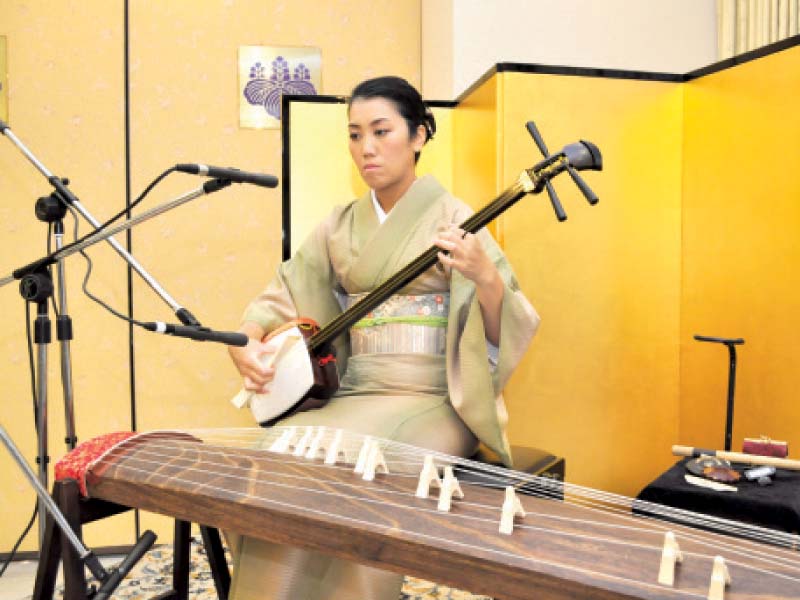
ISLAMABAD: Uplifting. Moving. Inspired.
Pick your favourite, because these were just some of the adjectives used to describe the four-song set performed by Japanese musician Sumie Kaneko on Thursday at an event hosted by the Embassy of Japan at its ambassador’s residence.
New York-based Kaneko is an internationally-recognised Japanese koto and shamisen player, as well as a jazz singer and songwriter. Trained at the Tokyo National University of Fine Arts and Music, Kaneko also studied Jazz vocals at Berklee College of Music in 2006. She has been recognised as a pioneer by her chromatic use of the two instruments and has collaborated with many instrumentalists, and performed most notably as the first shamisen player on Paula Vogel’s “The Long Christmas Ride Home.”
It was her second tour of Pakistan.
Koto is a traditional Japanese string instrument with 13 strings, somewhat similar to a santoor, while the shamisen is a three-string instrument similar to a rubab.
Kaneko started by thanking the embassy for inviting her again. “I’m honoured and happy to be back. I’m so excited to meet so many people again,” she said, adding that “It’s a privilege to tour the world and share the beauty of music and culture.”
She opened with the shamisen, first performing an instrumental piece titled “Kyorai,” before moving on to “Sagi Musume,” a well-known song which is instantly recognisable for anyone familiar with kabuki theatre. She also offered humorous explanations of the background to every piece.
As skilful as the first two pieces were, it was her performances on the koto which left the audience spellbound.
The first was “Mizuno Dasho,” which she informed was written in 67, “but is still very non-traditional and new.”
The memorable performance on the large string instrument was followed up by an instrumental piece from 1985. Its name translated to ‘Like a Bird.’
Before starting, she explained how it reflected differences in the Ekta school and the Yamada school, noting that the former is more similar to western styles.
By the time the moving piece ended, audience members who were swaying to every pluck of a string gave Kaneko a round of thunderous applause, and later, many expressed hopes of seeing her again.
Speaking to The Express Tribune, Kaneko also noted how much she enjoyed that the audience appreciated the performance.
Earlier, Ambassador Takashi Kurai, while welcoming guests, offered an apology for the delay in the start of the performance. The delay was to allow guests to arrive as a protest near the entrance to the Diplomatic Enclave had created a bit of trouble for some to get to the venue.
He later said that cultural events help build and strengthen people-to-people contacts. “I find cultural events to be very important, as they not only help in developing and strengthening diplomatic links, but also in building personal relations among the attendees as well. It is important to understand that aesthetic and intellectual nourishment is essential for a healthy lifestyle, and the number of people gathered here today are proof that Pakistanis, like Japanese appreciate art and music,” he said.
Ambassador Kurai added that the show is a great opportunity for Pakistanis to experience the fascinating diversity of Japanese music.
On Kaneko, he noted that her music is not typically Japanese classical or contemporary, rather it is fusion. He added that she would also be performing in other cities in the coming days.
The embassy has collaborated with the Lahore Arts Council and the Pakistan Japan Cultural Association, Lahore to organise a live performance on Sunday by Kaneko titled “Japanese Traditional Music and Improvisation” at the Alhamra Art Centre, Lahore.
Published in The Express Tribune, September 3rd, 2016.



































































COMMENTS
Comments are moderated and generally will be posted if they are on-topic and not abusive.
For more information, please see our Comments FAQ